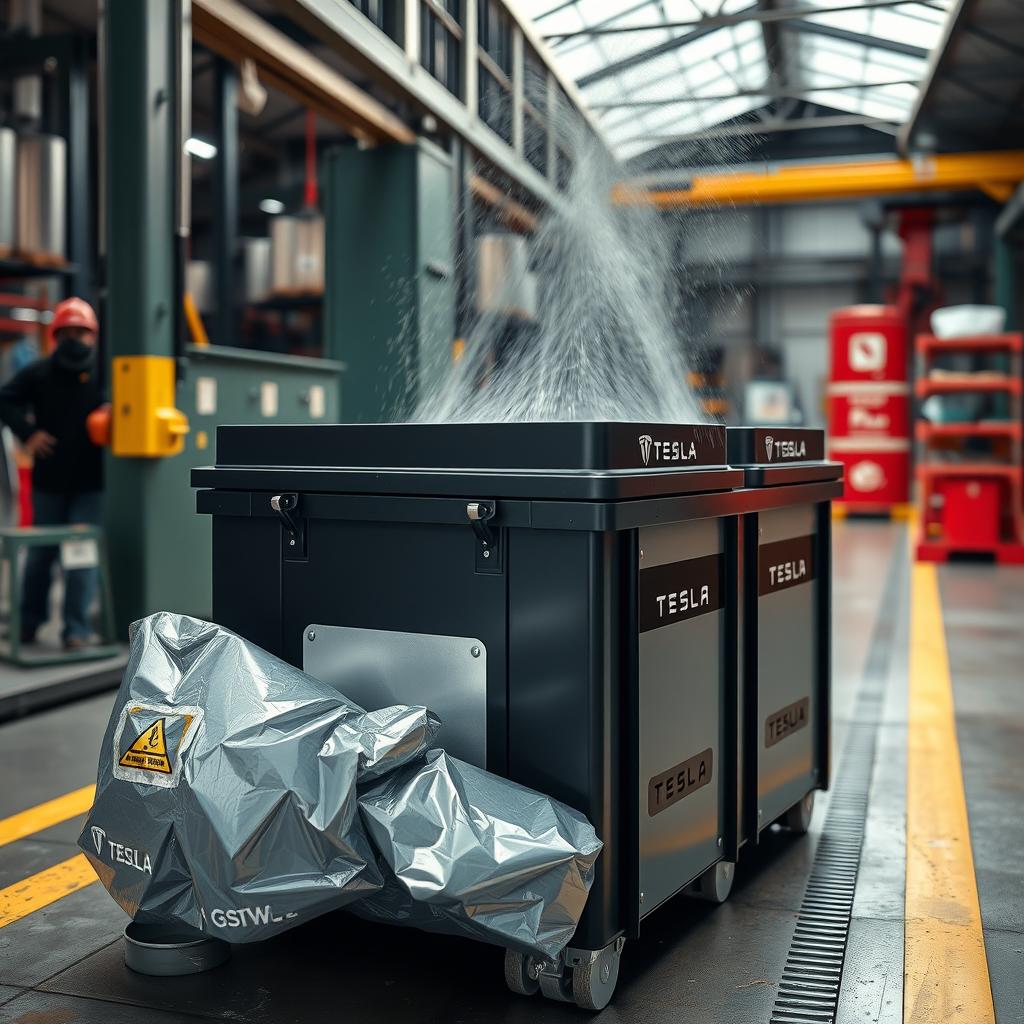Are Tesla Cars Waterproof?
Are Tesla Cars Waterproof? Here’s the Truth
Let’s cut to the chase—if you’re wondering whether Tesla cars are waterproof, the answer is no. But they do have some serious water resistance. That’s a big difference.
Teslas aren’t built to be submarines, but they can handle water better than most cars. If you’ve seen videos of Teslas driving through flooded streets, you’re probably wondering, can they really handle that? Let’s break it down.
How Water-Resistant Are Tesla Cars?
Teslas are electric vehicles (EVs), meaning they don’t have traditional engines that rely on air intake. This gives them a slight edge over gas-powered cars in water resistance.
- Battery Pack Protection: Tesla’s battery packs are sealed and designed to prevent water intrusion.
- High Ground Clearance: Some Tesla models, like the Model X and Model Y, have higher clearance, reducing the risk of water entering vital components.
- No Traditional Air Intake: Unlike gas cars, Teslas don’t need air to combust fuel, so there’s no risk of hydrolocking.
That said, water resistance is not the same as waterproofing. Driving through deep water can still be risky.
Tesla’s Official Statement on Water Resistance
Tesla doesn’t claim its cars are waterproof. However, CEO Elon Musk has tweeted about Teslas having limited amphibious capabilities. That means they can handle water for short periods, but they’re not designed for it.
What Does Tesla’s Owner’s Manual Say?
- Avoid driving through deep water: Tesla warns that water exposure beyond recommended levels can damage the car.
- Submersion voids warranty: If water gets into critical components, repairs won’t be covered under warranty.
- Do not attempt to use Tesla as a boat: The manual explicitly advises against treating it as an amphibious vehicle.
So, while a Tesla might survive a brief encounter with water, it’s not something you should rely on.
Can You Drive a Tesla Through Flooded Streets?
Technically, yes. But should you? Probably not.
Some Tesla owners have successfully driven through floodwaters, but it’s not recommended. Here’s why:
- Electrical Components: While Tesla’s electrical systems are sealed, prolonged water exposure can still cause malfunctions.
- Traction and Stability: Water can reduce grip, increasing the risk of losing control.
- Water Damage: Even if the car seems fine after driving through water, hidden damage can show up later.
What Happens If a Tesla Gets Submerged?
If a Tesla gets fully submerged, the risks increase significantly. Here’s what could happen:
- Battery Short Circuits: Although the battery pack is well-sealed, extreme water exposure can still cause electrical failures.
- Interior Water Damage: Water entering the cabin can ruin electronics and upholstery.
- Safety Systems Might Fail: Tesla’s safety features, like autopilot and sensors, could malfunction after water exposure.
It’s best to avoid deep water and drive cautiously during floods.
How Tesla Compares to Other Cars in Water Resistance
Compared to traditional gas-powered vehicles, Teslas have some advantages:
- No engine hydrolock risk: Gas engines can seize up if water enters the intake, but Teslas don’t have this issue.
- Better sealed undercarriage: Tesla’s flat-bottom design helps keep water out of sensitive areas.
- Instant torque control: Electric motors provide precise power delivery, improving control in slippery conditions.
However, they’re still vulnerable to water-related issues, just like any other car.
How to Protect Your Tesla from Water Damage
If you live in a flood-prone area or drive in wet conditions often, follow these tips:
- Avoid standing water: Even shallow puddles can hide deeper hazards.
- Check weather conditions: If heavy rain is expected, park in a safe, elevated area.
- Inspect door seals: Ensure all seals are intact to prevent leaks.
- Use Tesla’s air suspension: If you have a Model X or Model S, raise the suspension before driving through water.
Being proactive can help prevent costly repairs.
What to Do If Your Tesla Gets Water Damage
If your Tesla has been exposed to deep water, follow these steps:
- Do not turn it on: Trying to power up a wet Tesla can cause more damage.
- Disconnect the battery: If safe, cut power to prevent short circuits.
- Contact Tesla Service: Schedule an inspection to assess potential damage.
- Check for software alerts: Tesla’s onboard system might detect issues.
- Dry it out: Use fans and dehumidifiers to remove moisture from the interior.
Taking these steps can minimize long-term damage.
Final Thoughts: Are Tesla Cars Waterproof?
No, Tesla cars are not waterproof. They are water-resistant to an extent, but they’re not designed for deep water exposure.
If you’re in a situation where you must drive through water, proceed with caution. Otherwise, it’s best to avoid it altogether.
So, if you were hoping for an EV that doubles as a boat, Tesla isn’t it.

Are Tesla Cars Waterproof? That’s the big question.
People see videos of Teslas driving through floods. They wonder if it’s safe. Can you really take a Tesla into deep water without frying the electronics?
Let’s Talk About Tesla’s Water Resistance
Teslas are not officially waterproof, but they are built with impressive water resistance. The battery pack is sealed. The electrical components are enclosed. But that doesn’t mean you should treat your Tesla like a submarine.
Teslas vs. Traditional Gas Cars in Water
- No engine air intake: Gas cars need air to run. Teslas? All electric. No risk of water getting sucked into an engine.
- Sealed battery packs: Tesla’s high-voltage battery packs are designed to resist water.
- Electronics are well-protected: Tesla builds its cars to withstand rain, puddles, and some flooding.
Sounds great, right? But there’s a limit.
Waterproof vs. Water-Resistant: What’s the Difference?
Waterproof means completely sealed from water. You could submerge it, and nothing would get in.
Water-resistant means it can handle some water exposure but has limits. That’s where Teslas stand.
Elon Musk once tweeted that Teslas can “briefly serve as a boat” because the battery and drivetrain are sealed. But that doesn’t mean you should test it out.
How Much Water Can a Tesla Handle?
Tesla does not provide an official water-wading depth.
But some Tesla owners have tested it out. In videos, they drive through flooded streets, sometimes with water above the wheels.
Here’s the risk:
- Too much water = electrical failure
- Battery damage = massive repair costs
- Warranty may not cover water damage
If water gets into sensitive areas, it can short-circuit components or cause long-term damage. That’s a big deal when your car relies entirely on electronics.
Tesla’s Water Resistance by Model
Tesla Model 3
- Sealed battery pack under the car
- Can handle rain, puddles, and minor flooding
- Not designed for deep water
Tesla Model Y
- Similar to Model 3 in water resistance
- Higher ground clearance, which helps in water
Tesla Model S & X
- More ground clearance in the Model X (SUV design)
- Model S has been seen floating in floodwater
- Still, not recommended to drive through deep water
Real-World Examples: Teslas in Water
Some Tesla drivers have gone viral for driving through floodwaters. A Model S in China once floated through a flooded street. The driver claimed it worked because of the sealed battery pack.
Another video showed a Model 3 driving through a waterlogged underpass. The car made it through, but that doesn’t mean it was a good idea.
Does Tesla Warranty Cover Water Damage?
Nope. Tesla’s warranty does not cover water damage. If you flood your car, you’ll be paying out of pocket for repairs.
And trust me, EV repairs are expensive.
How to Protect Your Tesla from Water Damage
- Avoid deep water: Don’t drive through floods, even if you’ve seen others do it.
- Be mindful of heavy rain: While Teslas handle rain well, avoid areas prone to deep water pooling.
- Inspect seals and undercarriage: Make sure your car’s protective seals are intact.
FAQs About Tesla and Water
Can you take a Tesla through a car wash?
Yes. Tesla cars are designed for automatic car washes. Just use Car Wash Mode in newer models to disable wipers and auto-locking.
Can Tesla drive through floods?
It’s possible, but not recommended. Even if it survives, you could cause long-term damage.
What happens if water gets into a Tesla battery?
Water and high-voltage batteries don’t mix. A short-circuited battery can be dangerous and extremely costly to repair.
The Verdict: Are Teslas Waterproof?
Bottom line: Teslas are water-resistant, not waterproof. They can handle rain, puddles, and minor water exposure. But deep water? That’s a gamble.
Don’t risk it. Keep your Tesla on dry roads.



